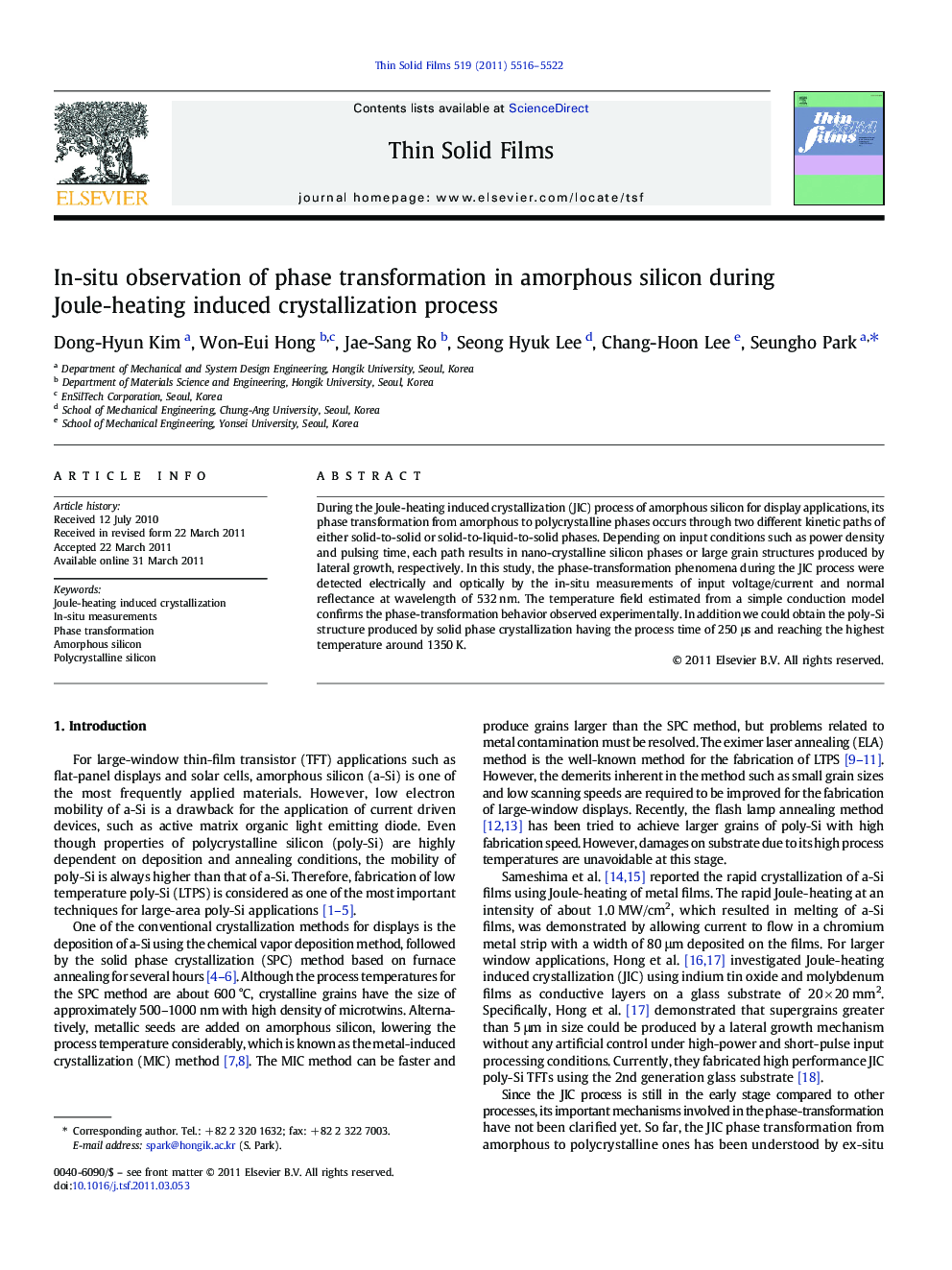| Article ID | Journal | Published Year | Pages | File Type |
|---|---|---|---|---|
| 10670190 | Thin Solid Films | 2011 | 7 Pages |
Abstract
During the Joule-heating induced crystallization (JIC) process of amorphous silicon for display applications, its phase transformation from amorphous to polycrystalline phases occurs through two different kinetic paths of either solid-to-solid or solid-to-liquid-to-solid phases. Depending on input conditions such as power density and pulsing time, each path results in nano-crystalline silicon phases or large grain structures produced by lateral growth, respectively. In this study, the phase-transformation phenomena during the JIC process were detected electrically and optically by the in-situ measurements of input voltage/current and normal reflectance at wavelength of 532 nm. The temperature field estimated from a simple conduction model confirms the phase-transformation behavior observed experimentally. In addition we could obtain the poly-Si structure produced by solid phase crystallization having the process time of 250 μs and reaching the highest temperature around 1350 K.
Related Topics
Physical Sciences and Engineering
Materials Science
Nanotechnology
Authors
Dong-Hyun Kim, Won-Eui Hong, Jae-Sang Ro, Seong Hyuk Lee, Chang-Hoon Lee, Seungho Park,
